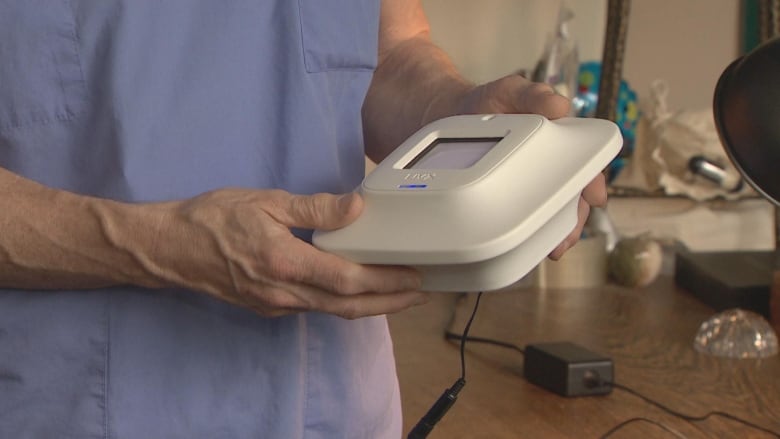Infection
N.S. researcher aims to protect long-term care home residents from viruses using UV light
Using UV light for disinfection is common in medicine, but Dr. Kenneth Rockwood is exploring a new application of the practice.
With funding from Research Nova Scotia, he’s studying whether UV lights mounted in the ceiling of long-term care homes can kill airborne viruses and reduce infections.
“This is an important problem because even before the pandemic, it was a very common cause of death,” said Rockwood, a geriatrician with Nova Scotia Health. “Older adults who live in long-term care commonly get the flu, and in them, way more than anyone else, it’s a fatal illness.”
When it comes to COVID-19, a June 2020 study found that residents in long-term care homes made up 81 per cent of all reported COVID-19 deaths in Canada, double the rate of other developed countries.
Typically UV lights are used to sterilize objects or unoccupied spaces, but in Rockwood’s study the lights will be installed in public areas at nursing homes and programmed to emit safe levels of UVC light. The hope is it will help eliminate viral particles in the air, but the question will be whether it is effective — both medically and financially.
“As far as we’re aware, this is the only registered double-blind study anywhere in the world which is using UV lights with people in it,” said Stefan Leslie, CEO of Research Nova Scotia, which has invested $2.8 million in the project.
Funding for the study was allocated from a $50 million contribution the provincial government made to the Nova Scotia COVID-19 Response Council.
The Public Health Agency of Canada has previously analyzed similar studies that took place around the world, concluding there was too little evidence to show that using UV technology in occupied settings was effective.
In phase one of Rockwood’s research, the lights were installed at two nursing homes, Northwood’s Halifax campus and Windsor Elms Village in Falmouth. During phase two, its current stage, The Cove Guest Home in Sydney was added as a third site.

Residents will have their eyes and skin monitored to make sure the lights don’t adversely affect them.
“We made sure that we met with people from the nursing homes and talked to them, and talk to their families, and talk to the staff, and tried to allay fears that people might have about the technology. And that was really, really helpful,” Rockwood said.
In the second phase, a lamp made by B.C.-based UVX Inc. replaced the previous American model they had been using. It can shine over a space of about 500 square feet and can be controlled and monitored through an online dashboard.
“The lamps aren’t cheap. So we have built in a cost-effectiveness study which will be done at the end once we know what the effectiveness is,” Dr. Rockwood said. “We have to say, ‘what will the cost be per case of the illnesses that have been avoided?'”
In an email, UVX Inc. co-founder Saimir Sulaj said the company doesn’t “have a fixed price” per unit “as the pricing depends heavily on the number of units installed and the type of agreement.”
But he said a monthly leasing option could cost residents around $7 a month, depending on the circumstances, if the care home decides to pass on the costs.

Dr. Allison McGeer, an infectious diseases specialist at Toronto’s Mount Sinai Hospital, said cost and maintenance have deterred medical professionals from implementing UV technology more widely.
“It was more expensive than having people just do the regular cleaning and the people doing the regular cleaning was more effective,” she said.
The study is different than many that have been conducted previously since the lights are being used in a public, occupied setting with particularly vulnerable patients, she noted.
“There’s a lot we need to learn about it,” McGeer said. “Even if it’s not a miracle, it may be a step in the right direction and every step in the direction of protecting residents is a good one.”
Rockwood’s study will continue to collect data until the end of next year. The findings could be unveiled by early 2025.

